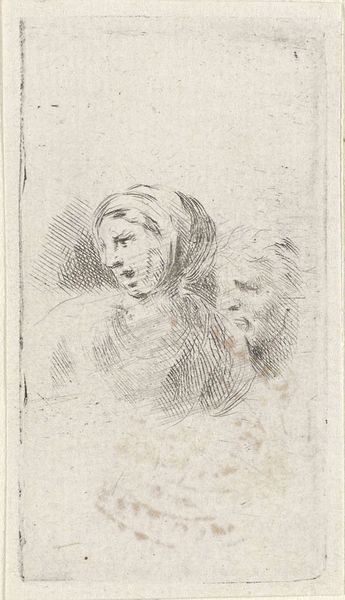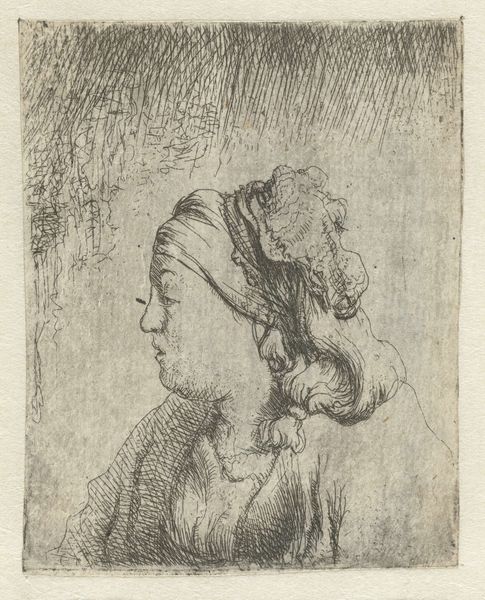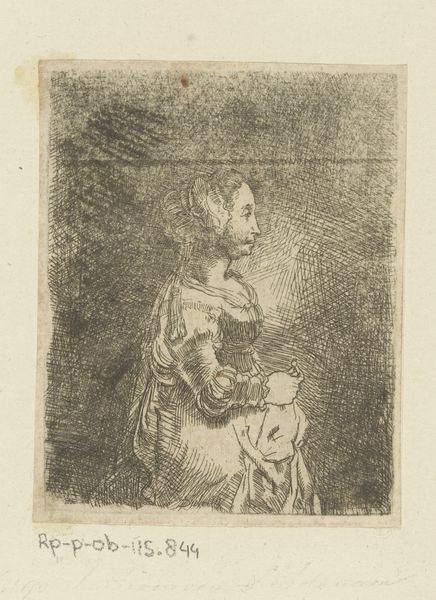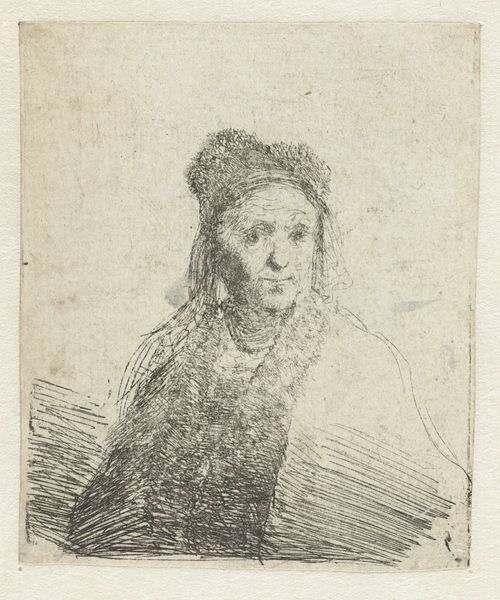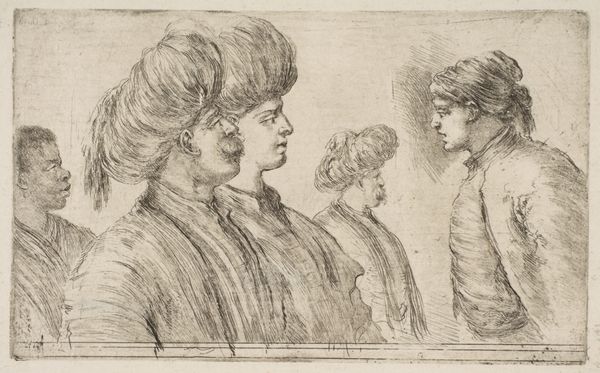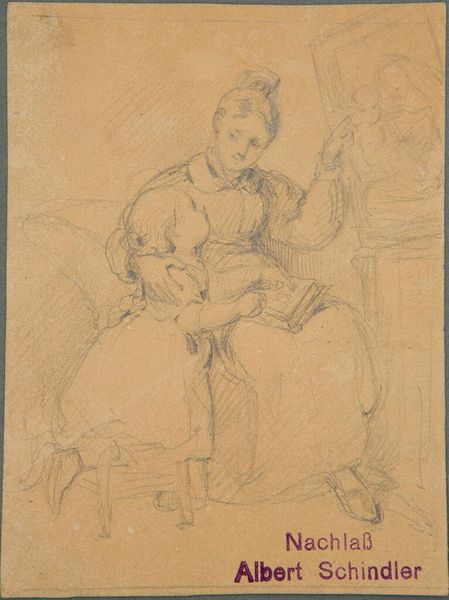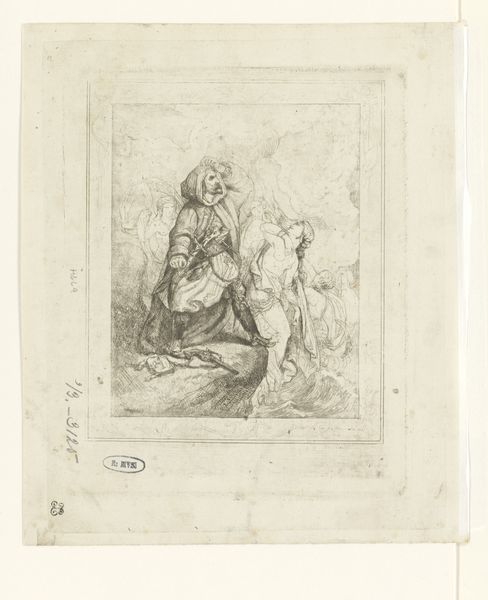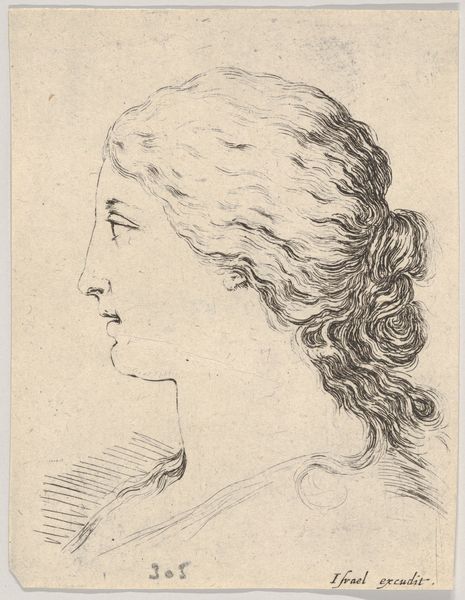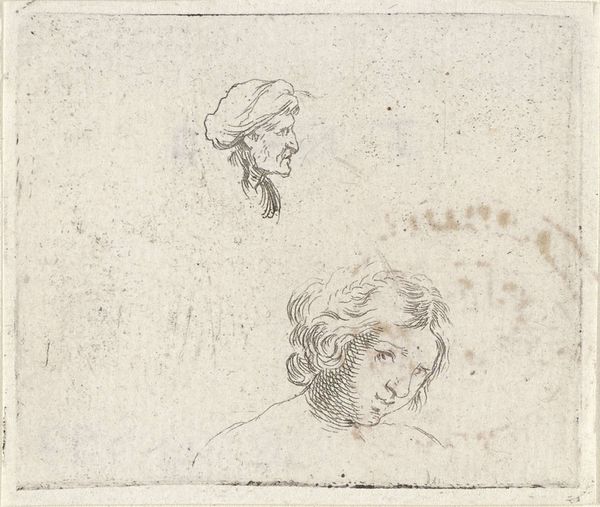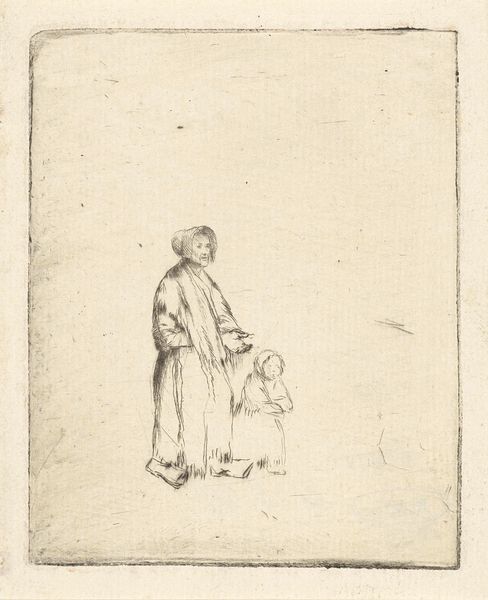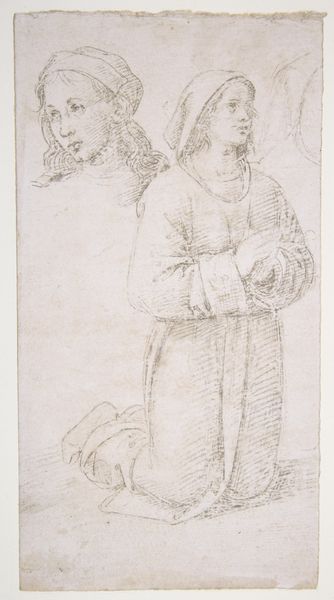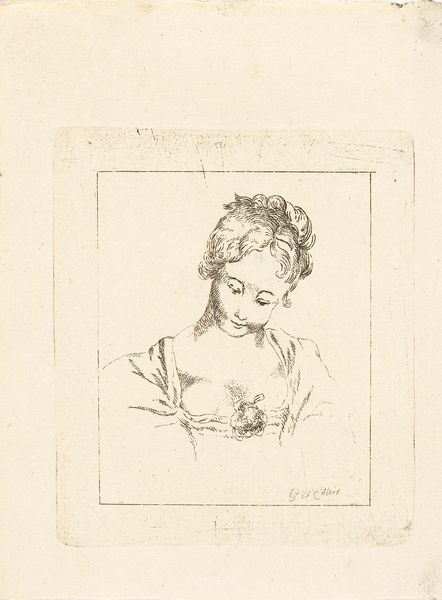
drawing, print, etching
#
portrait
#
drawing
# print
#
etching
#
history-painting
#
realism
Dimensions: height 65 mm, width 43 mm
Copyright: Rijks Museum: Open Domain
Curator: My initial thought? This is almost shockingly intimate, like catching a fleeting glance in someone's private studio. Editor: You've hit on something there. The piece we’re looking at is titled "Studieblad met twee vrouwenhoofden," or "Study Sheet with Two Women's Heads," and it comes to us from Louis Bernard Coclers. Though we aren't certain when exactly it was composed, its dates range from 1756 to 1817. It’s an etching – so, an early printmaking technique, incised lines on a metal plate. Curator: And those lines, oh my, they give so much. The main figure is almost shy, headscarf neatly tied, while the second head is more like a dream or a quick thought fading. There's a vulnerability here, I think. Something about seeing women not posed or glorified... Editor: It's interesting you mention the lack of idealization. Coclers was working within a moment of increasing realism, though, obviously, expectations of the roles of women placed huge pressures on the aesthetic conventions of the time. That's why it may feel so "intimate", it does manage to capture a sense of the everyday. How the very structure of academies shaped the artists’ thinking and, of course, who even had access to the artistic world in the first place. Curator: Yes, exactly, and that raw glimpse is enhanced by the medium. The roughness of the etching allows for that kind of spontaneity, the sense of a fleeting impression recorded swiftly. Each imperfect line contributes to the overall, very potent effect. Editor: I see that; this speaks to how the supposed 'constraints' of the etching process, particularly its emphasis on line and hatching, ultimately serve Coclers’ expressive ends. Think of it as almost like early photographic ‘snapshots’, or, well, the closest thing at the time. Curator: Absolutely! To sum it up: it's more than just a 'study,' I think— it’s an entire emotional landscape etched in ink. Editor: Precisely. The print underscores the complexities of image-making, of portraying human subjects in ways that reflect evolving social values and institutional structures.
Comments
No comments
Be the first to comment and join the conversation on the ultimate creative platform.
